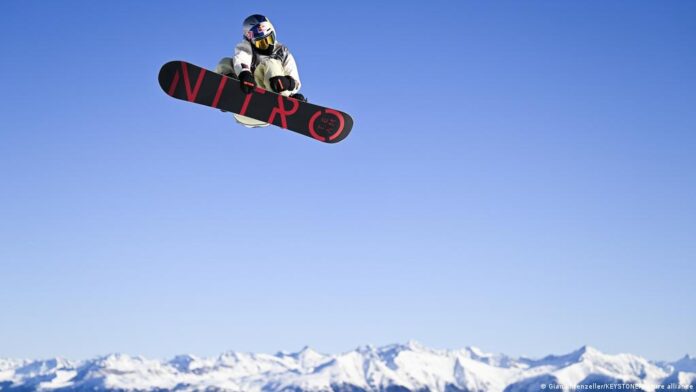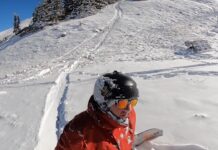
Snowboarder’s Ankle ranks second in the top 5 Injuries in Snowboarding and Skiing. Snowboarder’s Ankle refers to a fracture of the lateral process of the Talus bone, which is located on the outer side of the ankle, above the heel bone. This injury is fifteen times more common in snowboarders than in the general population, hence, this injury is often termed as Snowboarder’s Ankle.
With this injury, a history of an ankle sprain from Snowboarding is common. Typically, there is pain at the back on the bony prominence on the outer side of the ankle, which can be extremely tender to touch. It is usually accompanied by swelling and bruising.

The Talus is located above the heel bone, deep in the ankle, and with the shin bone above it to form the ankle joint. There is also some contact with the lateral malleolus of the Fibula (bony prominence) on the lateral (outer side) of the ankle. The ‘lateral process of the Talus’ is a medical term that refers to the part of the Talus bone located on the outer side of the ankle, immediately above the heel bone.
When the ankle is ‘dorsiflexed’ (toes are brought toward the shin) the Talus gets locked in place by the surrounding bones. If a person brings his or her foot into a dorsiflexed position and it then rolls in on the joint below the ankle, then the lateral process of the Talus gets compressed in between the heel and the lateral malleolus of the Fibula. If there is sufficient force then the lateral process of the Talus will fracture.

Recognizing this injury in its early stages is difficult but can help reduce the likelihood of subsequent ankle joint degeneration and resulting functional disability. Surgery may be required. If you suffer from a Snowboarder’s Ankle injury, seek medical help.
Once a fracture of the Talus bone has been confirmed, the medical management is dependent on the position of the fracture fragments. Small fractures where the fragments are not displaced tend to recover well with conservative treatment and a period of immobilization in an Aircast Pneumatic Walker. More complicated fractures often require surgical fixation with a screw.



















